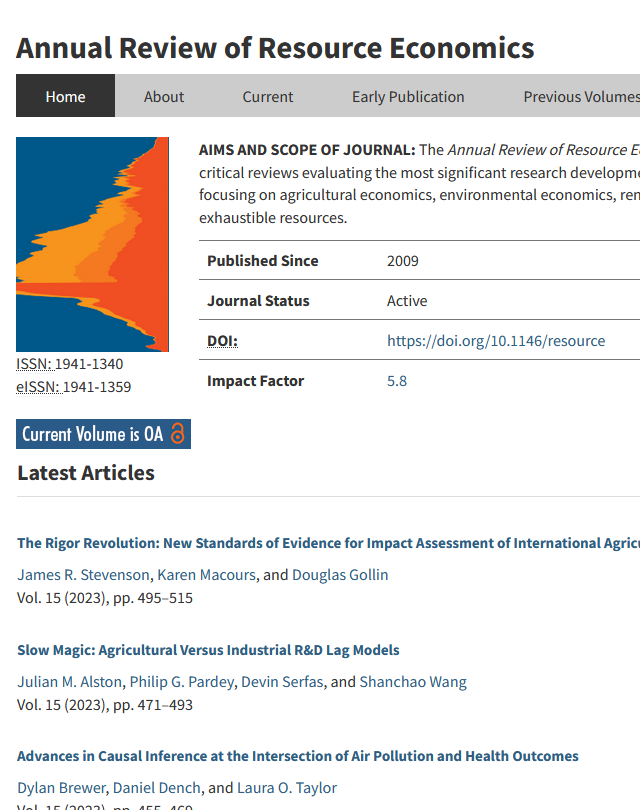Agricultural Productivity and Climate Mitigation
IF 8.4
2区 经济学
Q1 AGRICULTURAL ECONOMICS & POLICY
Annual Review of Resource Economics
Pub Date : 2024-10-07
DOI:10.1146/annurev-resource-101323-094349
引用次数: 0
Abstract
Agriculture will play a central role in meeting greenhouse gas (GHG) emission targets, as the sector currently contributes ∼22% of global emissions. Because emissions are directly tied to resources employed in farm production, such as land, fertilizer, and ruminant animals, the productivity of input use tends to be inversely related to emissions intensity. We review evidence on how productivity gains in agriculture have contributed to historical changes in emissions, how they affect land use emissions both locally and globally, and how investments in research and development (R&D) affect productivity and therefore emissions. The world average agricultural emissions intensity fell by more than half since 1990, with a strong correlation between a region's agricultural productivity growth and reduction in emissions intensity. Additional investment in agricultural R&D offers an opportunity for cost-effective (<US$30 per ton carbon dioxide) and large-scale emissions reductions. Innovations that target specific commodities or inputs could even further reduce the cost of climate mitigation in agriculture.农业生产力与气候减缓
农业在实现温室气体(GHG)排放目标方面将发挥核心作用,因为该部门目前占全球排放量的 22%。由于排放量与农业生产中使用的资源(如土地、化肥和反刍动物)直接相关,投入品使用的生产率往往与排放强度成反比。我们回顾了农业生产率的提高如何促进了排放的历史性变化、它们如何影响地方和全球的土地利用排放,以及研发投资如何影响生产率并进而影响排放的证据。自 1990 年以来,世界平均农业排放强度下降了一半以上,一个地区农业生产率的增长与排放强度的下降之间有着密切的联系。对农业研发的额外投资为实现具有成本效益(每吨二氧化碳 30 美元)的大规模减排提供了机会。针对特定商品或投入的创新甚至可以进一步降低农业气候减缓的成本。
本文章由计算机程序翻译,如有差异,请以英文原文为准。
求助全文
约1分钟内获得全文
求助全文
来源期刊

Annual Review of Resource Economics
AGRICULTURAL ECONOMICS & POLICY-
CiteScore
9.40
自引率
0.00%
发文量
34
期刊介绍:
The Annual Review of Resource Economics provides authoritative critical reviews evaluating the most significant research developments in resource economics, focusing on agricultural economics, environmental economics, renewable resources, and exhaustible resources.
 求助内容:
求助内容: 应助结果提醒方式:
应助结果提醒方式:


